Inside Jazz Licensing
Authors: MichaelTabb, JimRuehlinBuild basis: IBM Engineering Lifecycle Management (ELM) release 7.x and later
This topic covers how the Jazz licensing subsytem works. It explains the various license types that the server supports as well as some interesting features that may impact users and admins alike.
 Some licenses are perfect subsets of each other. This means that one license contains exactly the same operations as another and additionally unlocks some other capabilities. An example of this is the EWM Developer license. The Developer license contains exactly the same operations as the EWM Contributor license, but also provides additional capabilities. For this reason, the Contributor license is considered a perfect subset of the Developer license.
Some licenses are perfect subsets of each other. This means that one license contains exactly the same operations as another and additionally unlocks some other capabilities. An example of this is the EWM Developer license. The Developer license contains exactly the same operations as the EWM Contributor license, but also provides additional capabilities. For this reason, the Contributor license is considered a perfect subset of the Developer license.
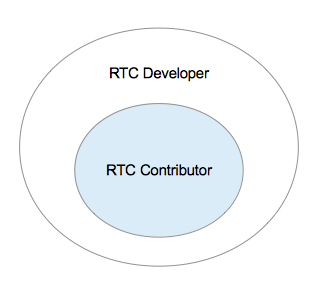
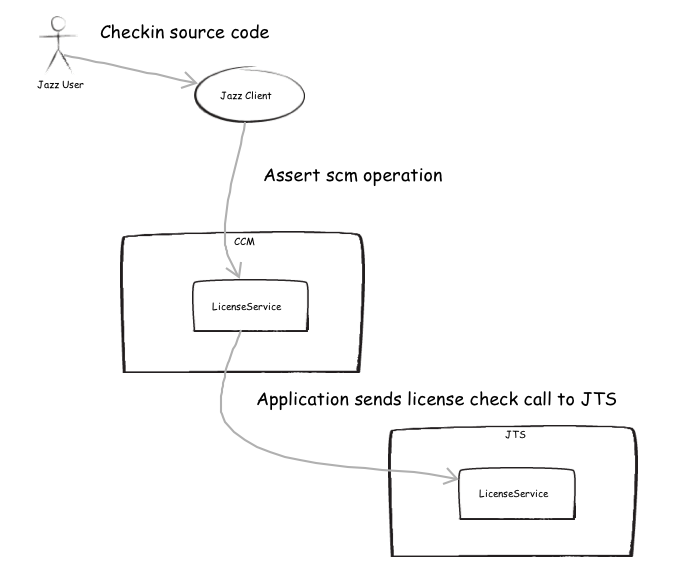
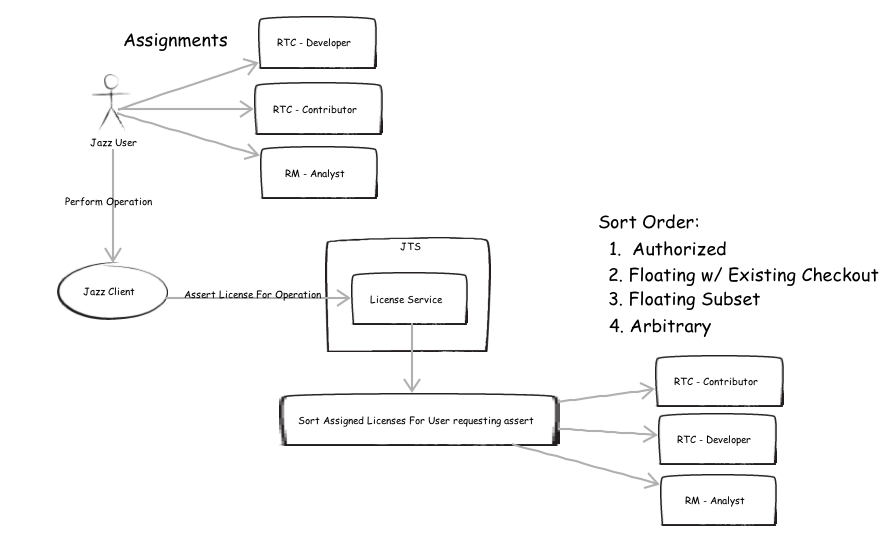 A breakdown of the ranking:
A breakdown of the ranking:
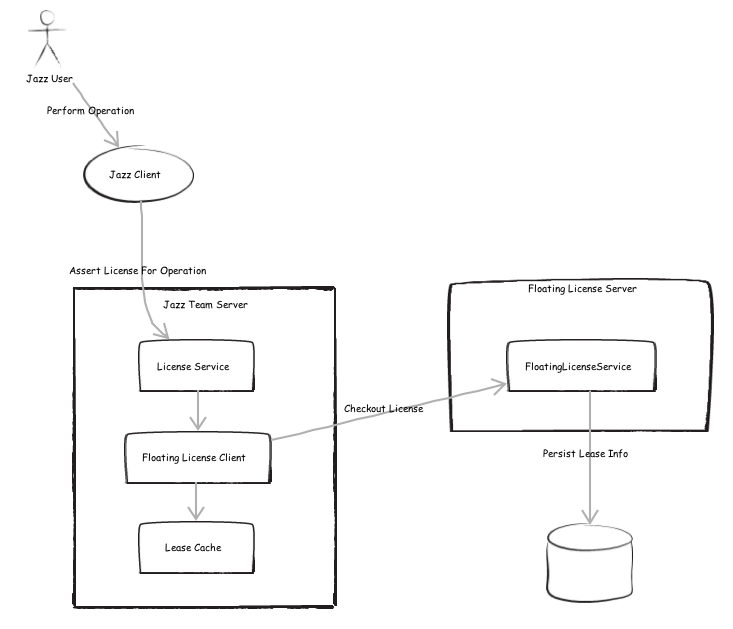
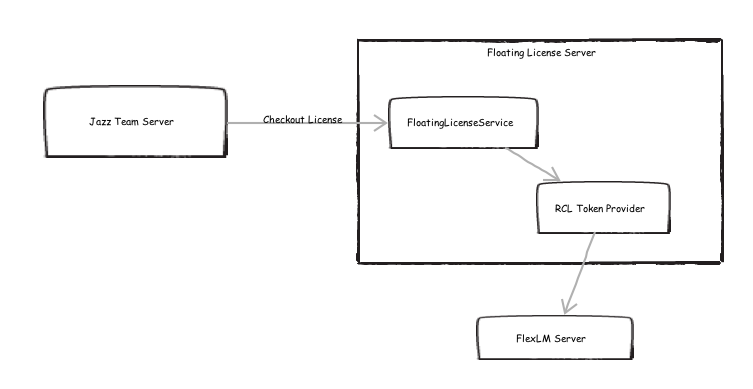
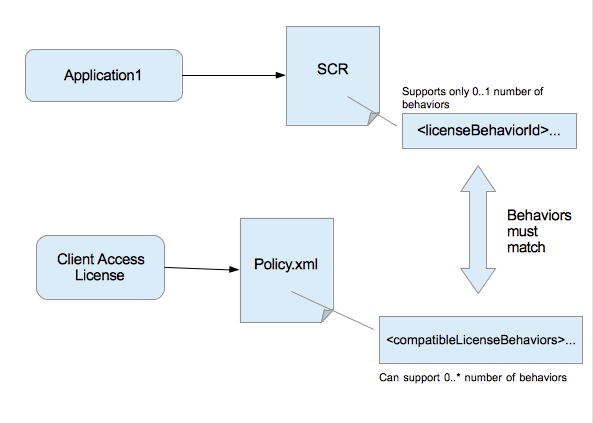
User roles and client access licenses
Each user is assigned roles based on team and/or project membership. For example, there could be roles to read/write work items, perform source code management (SCM) operations, etc. Each one of these roles is mapped to an operation ID that is defined in a client access license (CAL). If the user has the role, it does not mean they can perform that action yet. The user must be assigned a CAL in order to enable the role. There are 3 types of licenses that the Jazz server supports:- Perpetual
- Term (via Tokens)
- Authorized
- Floating
Capabilities
Licenses are designed to allow for overlapping capabilites while maintaining an exlcusive set of its own capabilities. For example, an Engineering Workflow Management (EWM) Developer license may provide SCM capabilities as well as some work item read/write access. Meanwhile, an Engineering Test Management (ETM) Professional license may provide some test case authoring capabilities as well as some work item read/write access. There is an intersection between the two licenses at the work item read and write access. If a user was performing a work item read operation, either of these licenses could be used to satisfy the assertion request. The following figure illustrates the overlapping capabilities of some sample product licenses: Some licenses are perfect subsets of each other. This means that one license contains exactly the same operations as another and additionally unlocks some other capabilities. An example of this is the EWM Developer license. The Developer license contains exactly the same operations as the EWM Contributor license, but also provides additional capabilities. For this reason, the Contributor license is considered a perfect subset of the Developer license.
Some licenses are perfect subsets of each other. This means that one license contains exactly the same operations as another and additionally unlocks some other capabilities. An example of this is the EWM Developer license. The Developer license contains exactly the same operations as the EWM Contributor license, but also provides additional capabilities. For this reason, the Contributor license is considered a perfect subset of the Developer license.

License assertion
A license assertion is a check by the client to make sure a user has a license to perform an operation. Different actions a user performs in an application may result in the checking of a license for that action. That action gets translated to an operation ID, as defined above. All licensing assertions occur on Jazz Team Server (JTS). The applications send the assertion requests to Jazz Team Server. In other words, all license management is done on Jazz Team Server. In the illustration below, a user may be performing an SCM action. That action will require the user to have a license, so the following steps occur for a license assertion:- The user on an EWM client performs an SCM action. The EWMt client code requires a license for the action. It makes a call to the server to perform the check
- The license service on the server handles this request, and performs the check. If the check fails, a LicenseNotGrantedException is thrown, and the client receives the error and is responsible for propogating it to the user.

Perpetual licenses
A Perpetual license does not expire. Perpetual licenses include Authorized and Floating licenses.Term licenses
A Term license is good for a fixed time. After that time it will no longer allow access to any ELM operations. Term licenses include Authorized and Floating licenses, and they can be managed with Tokens.Authorized licenses
If assigned, a single user (and only that user) will always have this license to perform the operations that are unlocked by it. The only way a user will not be able to use this license is if it unassigned from the user.Floating licenses
The floating license requires an additional step on top of the simple license flow because it requires that the license be checked out. Unlike an Authorized CAL, a single user is not assigned to the license. A floating license is part of a pool of licenses and are provided to users when requested (the request is handled by JTS and no user action is required beyond accessing the normal ELM operations). If no licenses are left in the pool the request for the license fails and the user requesting the license cannot perform ELM operations. Floating licenses are returned to the pool for use by others when a user logs off or is inactive for a period of time. There is a difference between a license assignment and a license checkout. An assignment is nothing more than a record which is persisted that associates a license to a user. This does not guarantee a license will be available when the user attempts to use the product. A checkout occurs when the user which has an assignment goes to actually use the product in a way that a license is required to perform an operation. At that point, the license then needs to be checked out from the license pool.Token license server (IBM Common License Server)
Tokens are a way to manage license use. When a term license is assigned, a set number of tokens are consumed. Licenses can continue to be assigned or checked out from the floating license pool until no more tokens are available. Tokens are managed by the IBM Common License Server.Checkout selection
Often a user has more than one floating license assigned to them. When an operation is asserted by a client, that operation may be able to be satisfied by more than one of the licenses assigned. This forces Jazz Team Server to decide which license gets checked out. When there is more than one, the license service sorts the list using the following algorithm:- Permanent CALs
- Existing floating license checkouts (version 4.0.3: non-token first, then token)
- Subset first
- Arbitrary
 A breakdown of the ranking:
A breakdown of the ranking:
Permanent CALs
A user always has a permanent CAL assigned. No checkout is required. Floating is limited, and on a shared basis. Using floating over permanent reduces the amount available for everyone else.Existing floating license checkouts
If the user already has a checkout, use the existing lease; otherwise, another license has the potential to be checked out. Because of their associated cost, token licenses are considered after "normal" floating licenses.Subset first
Floating licenses that are perfect subsets, or the most restrictive licenses are used first before their more costly superset parents. For example, the Rational Team Concert (RTC) Contributor license is a perfect subset of the Rational Team Concert (RTC) Developer license. If the user has both assigned, the Contributor license will come first in the list.Arbitrary
Licenses that have mutually exclusive operations and have no subset licenses available are the last to be selected. For example, this would happen if you have a Rational Team Concert Developer and a Requirements Management (RM) Analyst CAL assigned.Checkout flow
After the license are sorted and it is determined that the license to use is a floating license, the checkout process begins. The following outline shows a flow from the license service that needs to check out a floating license:- The license service selects the license (floating, in this example) needed to satisfy the assertion request
- The license service uses its floating license client to determine how to get a lease from the floating license server. It does the following actions:
- If the client has a reference to a lease for the license being checked out, it is placed on an asynch refresh queue, which runs peridocally to increase the lease timeout on the floating license server
- Otherwise, the client sends a checkout request to the server, and if successful, caches the lease information.

Floating leases
When a license is successfully checked out from the available pool, a lease record is persisted in the database which resides on the floating license server. The lease contains some bits of information such as user, license, and lease expiration time. With the lease persisted, in the event of a server restart, the expiration time does not reset.Token licenses
Token licenses are built on top of floating CALs. The only difference in their definition is that there is an associated token cost. The cost translates to the number of tokens to check out. If two otherwise equivalent (floating+token, supporting same operation) licenses are being considered for checkout, the one with the lesser token count will be selected. The checkout flow follows mostly the same flow as floating licenses do. After the floating license service realizes that a token checkout needs to occur, it delegates to the RCL token provider service, which in turn calls to the FlexLM server to perform this checkout. The tokens are not managed by Jazz, it is done so externally by a FlexLM solution that integrates into Jazz. After the tokens are checked out successfully, a lease is created and persisted in the same way that a floating lease is persisted. Here is an illustration of a token checkout:
Token Consumption by Role
Rational Team Concert- Developer 8
- Developer EP 9
- Contributor 5
- Stakeholder 1
- Quality Professional 10
- Contributor 5
- Analyst 9
- Contributor 5
Subset/superset assignment - version 4.0.1
In version 4.0.1, the restriction to disallow assignment of subset licenses was removed. Previously, as an example, a user could not have a Rational Team Concert Contributor and Rational Team Concert Developer assigned. These were looked at as 2 separate roles. This did not cover the case where a user had split roles and spent most of their time as a contributor and a small portion of their time as a developer. This would force a user to have the more costly developer license. Starting in version 4.0.1, the system provided more flexibility for this use case, and allowed the user to have both licenses assigned. There are some caveats, though. Note: This applies to floating and token licenses only.- When a user performs an action that can be done by both the Contributor and Developer, the most restrictive or subset license is checked out. In this case, the Contributor would be used.
- If the user performs an action that requires a Developer license and currently holds a Contributor license, both licenses are checked out and held onto until:
- The user logs out
- The lease expires due to inactivity
Compatible license behavior - version 4.0
In version 4.0, a new concept to enforce compatiability between applications and licenses was introduced. Jazz needed a way to prevent licenses from a previous version of a product to work with a newer version of a product. To accomplish this, an application can optionally declare a compatible license version in its SCR document. Meanwhile, the CAL must also declare what product versions it is compatible with. This check is performed at run time when compiling a list of available licenses to use upon a license assertion. A license is considered valid if the application that is sending the request to assert is in the list of compatible behaviors in the CAL. The figure below is an illustration of the pieces that make up the license compatibility feature:
Related topics: Deployment planning and design
External links:
- None
Additional contributors: None
Deployment.JazzLicensingExplained moved from Deployment.LicensingExplained on 2013-06-19 - 11:51 by Main.sbeard -
Contributions are governed by our Terms of Use. Please read the following disclaimer.
Dashboards and work items are no longer publicly available, so some links may be invalid. We now provide similar information through other means. Learn more here.